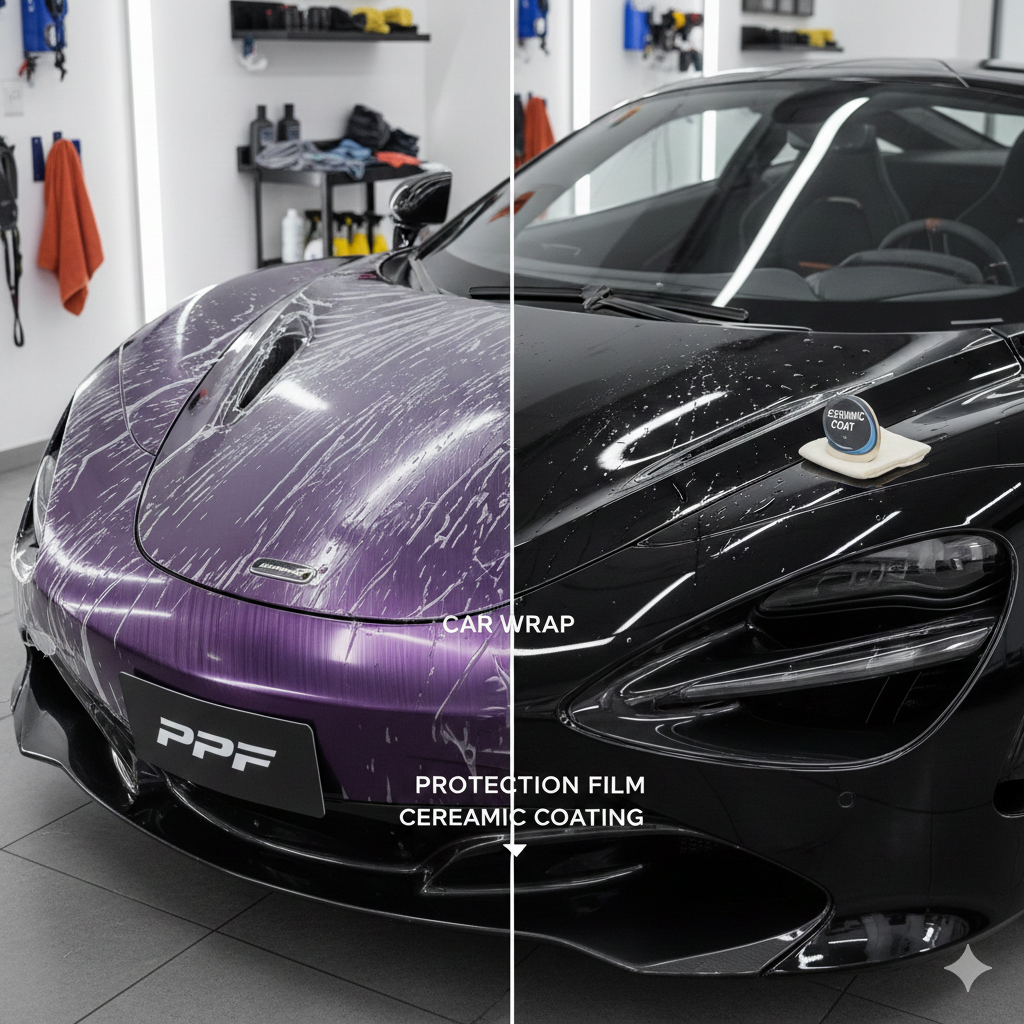Ceramic coating is a liquid polymer that bonds to a car’s paint, forming a durable, protective layer resistant to dirt, UV rays, and minor scratches. This coating offers longer-lasting protection compared to traditional waxes by chemically bonding with the vehicle’s surface.
Many car owners invest in ceramic coating to maintain their vehicle’s appearance and shield it from environmental damage. While professional application can be costly and requires preparation, the enhanced durability and easier maintenance often justify the expense.
Applying ceramic coating also improves the car’s shine, keeping it looking newer for years. However, the process demands time and skill, which is why understanding the benefits and challenges helps in deciding whether it fits a particular car owner’s needs.
Understanding Ceramic Coating for Cars
Ceramic coating car is a specialized protective layer that enhances a vehicle’s paint durability and appearance. Its composition, advantages, and available variations play key roles in the level of protection and maintenance it provides.
What Is Ceramic Coating?
Ceramic coating is a liquid polymer containing silicon dioxide (SiO₂) or titanium dioxide (TiO₂). When applied, it chemically bonds to the car’s factory paint, creating a strong, hydrophobic surface.
This layer helps repel water, dirt, and minor contaminants. Unlike traditional wax or sealants, ceramic coatings form a semi-permanent bond, offering longer-lasting protection without the need for frequent reapplication.
The coating also enhances the vehicle’s gloss and depth of color by smoothing out microscopic imperfections. Application requires careful surface preparation to ensure proper adhesion.
Benefits of Ceramic Coating
Ceramic coating provides durable protection against environmental elements like UV rays, acid rain, and bird droppings. It significantly reduces the risk of minor scratches and swirl marks.
Its hydrophobic properties make the car easier to clean, as water beads and slides off the surface, carrying dirt with it. This decreases maintenance time and the need for harsh cleaning chemicals.
The coating’s resistance to oxidation slows paint fading, preserving the vehicle’s finish. While it does not eliminate all damage, it offers superior defense compared to traditional waxes or sealants.
Types of Ceramic Coatings for Cars
There are several types of ceramic coatings based on hardness and chemical composition:
- Silicon dioxide (SiO₂) coatings: The most common, offering strong durability and excellent hydrophobicity.
- Titanium dioxide (TiO₂) coatings: Known for enhanced UV resistance and self-cleaning properties.
- Graphene-infused coatings: A newer option, combining graphene’s strength with ceramic benefits for improved durability and water repellency.
Coatings also vary in thickness and layering capabilities. Higher levels of hardness, such as 9H on the pencil hardness scale, provide more robust protection but require professional application.
Application and Maintenance
Applying ceramic coating requires precision and careful preparation, while maintenance involves regular cleaning and occasional reapplication to preserve protection and gloss. Both stages significantly affect the coating’s effectiveness and durability.
Professional vs. DIY Ceramic Coating
Professional ceramic coating typically guarantees a controlled environment, expert surface prep, and precise application. This approach reduces the risk of errors like uneven coverage or trapping contaminants under the coating.
DIY kits are more affordable but demand thorough preparation and patience. Users must clean and decontaminate the surface, mask off areas, and apply the coating carefully. Mistakes can lead to streaks or diminished protection, but when done correctly, DIY can still provide good results.
Professionals often use higher-grade coatings with longer warranties. DIY options may have shorter lifespans and require more frequent maintenance. The choice depends on budget, skill level, and desired longevity.
Step-by-Step Application Process
The surface must be thoroughly cleaned and free of oils, dirt, and previous wax or sealants. This usually involves washing, clay bar treatment, and paint correction if needed.
Once the surface is prepped, apply the ceramic coating in small sections using a microfiber applicator. Spread evenly and avoid heavy buildup. Allow the coating to bond for the specified cure time, typically from a few minutes to an hour, depending on the product.
Use a microfiber towel to gently buff off excess residue before it hardens. Maintain proper ventilation and ambient temperature to ensure optimal curing.
Avoid washing or exposing the car to moisture for at least 24 hours after application.
Caring for a Ceramic Coated Car
Maintenance starts with using a pH-neutral car shampoo and soft wash mitt to prevent damaging the coating. Avoid harsh chemicals or abrasive tools.
Periodic applications of a maintenance spray designed for ceramic coatings can boost hydrophobic properties and enhance gloss. These sprays create an additional protective layer that makes cleaning easier.
Dry the vehicle with microfiber towels to avoid scratches.
Regular inspections help identify any areas needing touch-ups or professional attention. Washing frequency varies but generally every 1-2 weeks keeps the surface clear of contaminants while preserving the coating’s effectiveness.



